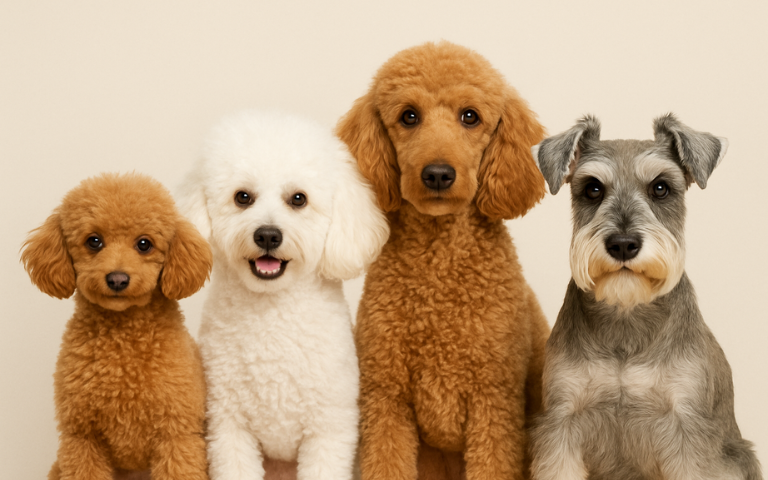Hypoallergenic Dogs – Best Breeds for People with Allergies
Many humans have constantly desired to own a canine. Loyal, loving puppies make each domestic experience like domestic. But what if sneezing, itchy eyes, and runny noses forestall that dream? Millions of canine fanatics revel in hypersensitive reactions to their pets, and for a number of them, even being near a hairy buddy can cause bronchial allergies or discomfort. There is the right information for you in case you are certainly considered one of them.
Do not deliver hope. For the ones wishing to experience the friendship of a canine without experiencing hypersensitivity signs and symptoms, Hypoallergenic Dogs provide a ray of optimism. Though they may be identified to create fewer allergens than different breeds, those dogs aren’t completely allergen-free. With suitable care and the proper breed choice, you could notably lessen hypersensitivity signs and symptoms, even as having a loving puppy by your side.
We will look at the records concerning Hypoallergenic Dogs breeds, their mechanisms, and which of them are ideal for allergy-inclined human beings and households in this book. There’s a breed for all, from tiny, non-losing lapdogs to lively curly-lined friends. We will, moreover, offer a few beneficial recommendations on how to manage puppy allergic reactions at domestic and dispel a few common myths along the way.
Wondering, “Can I live with a dog even though I have allergies?” Keep going, the answers you need are just ahead. This article is for you. Let’s find out how the right dog breed can bring joy without the sneezing!
Why Do Some Dogs Cause Allergies?
Dog Dander (Dead Skin Flakes)
For most individuals with dog allergies, dander is the main culprit. Falling off naturally from your dog, floating in the air, or sticking to surfaces are these little bits of dead skin. Particularly for those prone to allergies, dander can cause sneezing, coughing, or itchy eyes when inhaled.
Dog Hair and Fur
Many people suppose they’re allergic to canine hair, however it is the allergens caught in the hair that purpose issues. Shedding puppies unfold greater fur across the house, which consists of saliva, dander, and different allergens it making signs worse.
Saliva Proteins
Dog saliva consists of allergens like Can f1 and Can f2. These proteins stick with your dog’s pores and skin and coat once they lick you or themselves; once they dry and become airborne, they can cause allergic reactions.
Urine and Feces Allergens
Though much less common, proteins in a dog’s urine or feces also can cause allergies. If now no longer wiped clean properly, lines can dry, flip to dust, and flow into the air, affecting touchy individuals.
Airborne Particles in Closed Spaces
In houses with terrible ventilation, most of these allergens can accumulate within the air, furniture, carpets, and clothes. That’s why human beings experience worse interior round puppies than outside in sparkling air.
Top 10 Hypoallergenic Dog Breeds
Here are the most popular and safe dog breeds for allergy sufferers:
Poodle
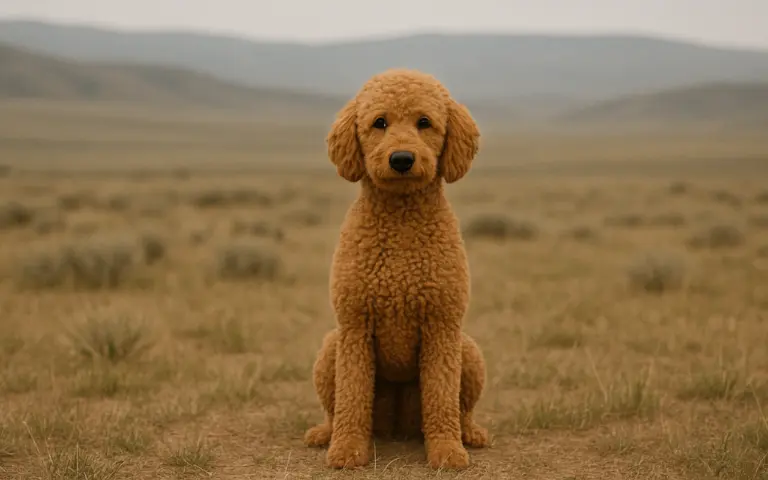
Rooted in German history, the Poodle served as a water retriever, earning a name that means ‘to splash in water.’ Later, the breed grew very popular in France, where it developed into the fashionable, well-groomed friend we now know. Standard, Miniature, and Toy are the three sizes of poodles, but all have a curly, thick coating that traps hair and dander, hence avoiding its dispersal.
This explains why they are Hypoallergenic Dogs. They are easy to train due to their sharp minds, and their loyal, affectionate personality makes them perfect companions at home. Still, their coat needs ongoing grooming to maintain excellent form. Poodles are also really flexible and thrive in both huge homes and flats.
Bichon Frise
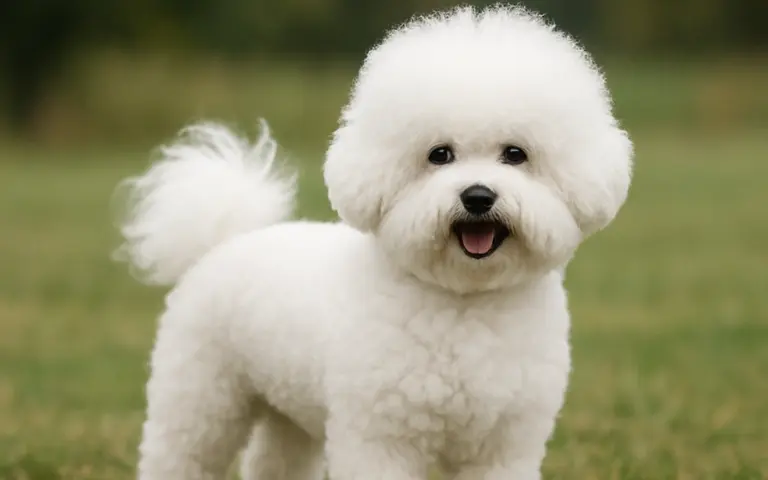
This cheerful breed, the Bichon Frise, is believed to have Mediterranean roots and descended from the Barbet and Poodle. Sailors introduced the Bichon to Europe in the 14th century, where it quickly became a favorite with French and Italian aristocrats. It’s easy to mistake the Bichon for a tiny cloud drifting across the floor. Though it has a thick
coat, it’s miles non-dropping and occasional in dander, best for allergic reaction sufferers. Playful, calm bichons like being around people. They are exquisite with kids and are excellent performers. Their coat, on the other hand, requires regular grooming, trimming, and combing to maintain its Hypoallergenic Dogs.
Maltese
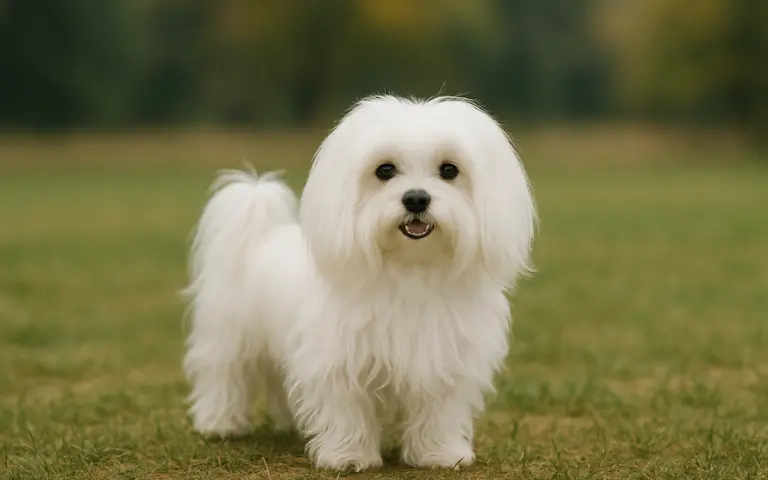
Dating back more than two millennia, the Maltese breed began on the ancient island of Malta and remains among the oldest known toy dogs. These dogs have been loved throughout the history of the historic Romans and Greeks, and even their tombs have been erected. Royal ladies in Europe loved them and observed them as a sign of extravagance. Because its long, mild white hair does now no longer shed an lousy lot and generates very little dander, this breed is right for allergic people.
Maltese make outstanding lap dogs because of their loving, charming, and first-class nature. They are best for inner life and broaden human attention. Although their coat requires daily brushing to prevent tangles, their short duration and low shedding nature make them the best Hypoallergenic Dogs.
Basenji
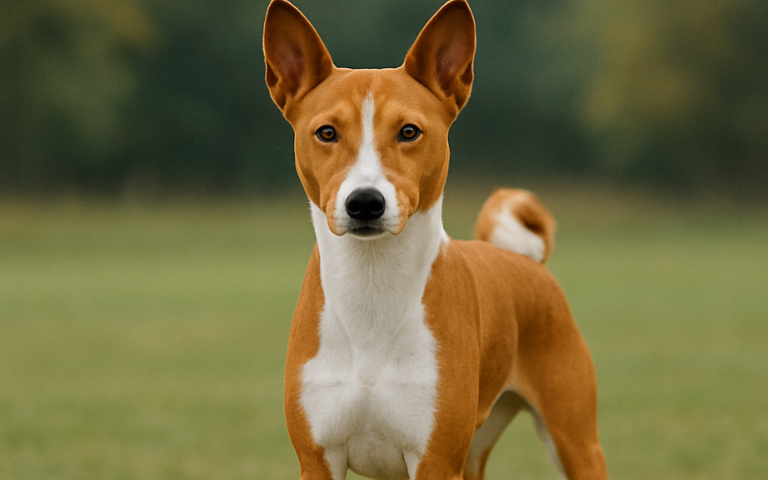
Dating back to ancient Egypt and Central Africa, the Basenji is among the oldest dog species. Originally developed by Congo’s tribes for hunting and tracking, these dogs were valued for their excellent vision and quiet locomotion. Much like cats, Basenjis groom themselves and have a short, fine coat that sheds very little, making them ideal for allergy sufferers. Furthermore, producing dander and less stink. Clean, low-maintenance, seldom barks this breed.
Instead, they create a distinctive yodel-like noise. Basenjis are athletic, intelligent, and autonomous. Though they require mental stimulation and exercise, once linked with their owners, they are very devoted.
Portuguese Water Dog
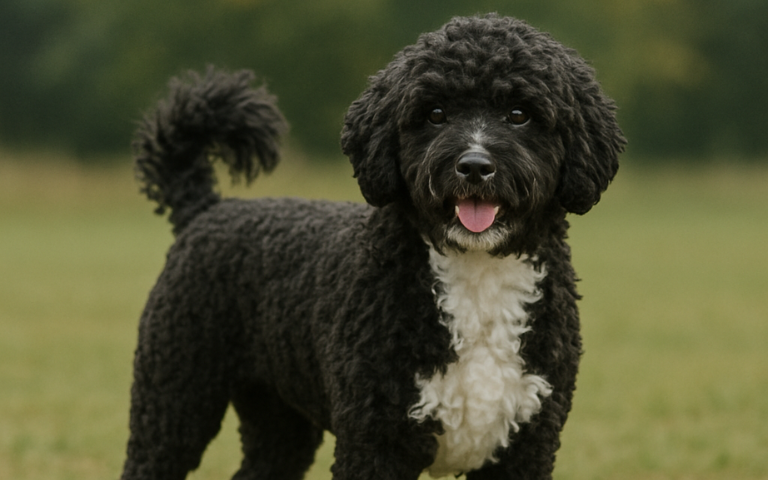
Originating in Portugal’s coastal areas, the Portuguese Water Dog, or “Cano de Ague Portuguese,” was created to assist fishermen via way of means of retrieving nets, swimming messages between boats, or even looking after the boat. With webbed feet and plenty of energy, those puppies are successful swimmers. The breed’s dense, non-shedding coat is water-resistant and perfect for allergy-sensitive individuals. Though day by day grooming is necessary, in change.
you get a smart, devoted, and amiable friend. The breed has become regarded all around while the Obamas’ circle of relatives picked a Portuguese Water Dog named Bo, consequently addressing their daughter’s allergies. Ideal for adventurous households and people with a lively lifestyle!
Schnauzer
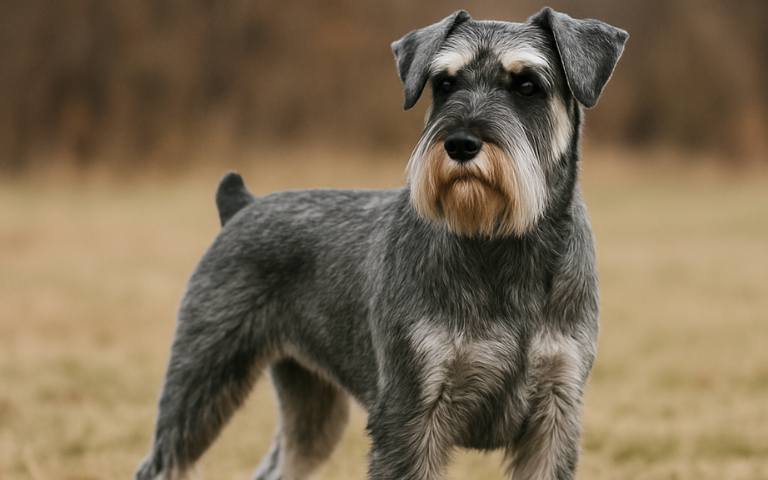
Originally from Germany within the Middle Ages, schnauzers had been bred to be watchdogs, rat catchers, and farm workers. Three instructions of miniature, standard, and massive have equal distinguishing characteristics: hairy eyebrows, beards, and wiry coats. A Schnauzer’s wiry outer coat sheds pretty little, and the breed generates less dander than many others.
This makes them an amazing alternative for allergy-susceptible people. Bravery, intelligence, and application outline schnauzers. They are speedy learners, dedicated protectors, and flourish in their circle of relatives settings. Though their coats want hand-stripping or clipping for upkeep, their sturdy persona extra than compensates for it.
Yorkshire Terrier
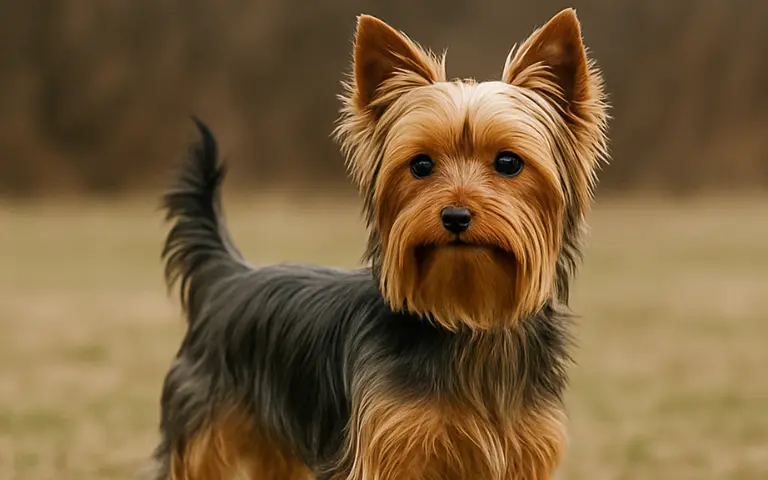
Originally hired to capture rats in fabric mills, the Yorkshire Terrier or “Yorkie” originated in England within the nineteenth century. They evolved elegant lap puppies over time, drastically for Victorian women. Yorkies are prominent through their coat, which resembles human hair and sheds nearly nothing. This lowers airborne allergens and dander.
They are self-assured, compact, and mobile. Yorkies are very dependable and own a sturdy mindset, even though they may be small. Though they may be perfectly suited for small dwellings or apartments, they require common grooming and brushing.
Labradoodle
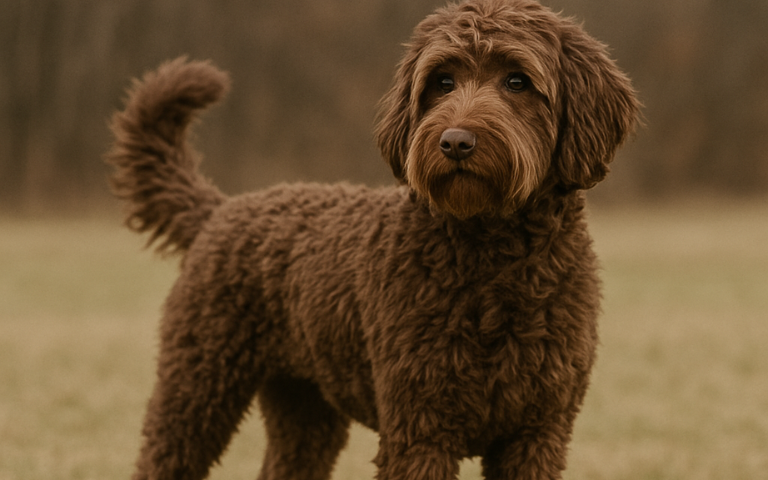
This young breed, known as the Labradoodle, originated in Australia in the 1980s through a mix of Poodle and Labrador Retriever. The aim changed into to lay out a manual canine match for Hypoallergenic Dogs; the end result changed into a wise, amiable, and typically hypoallergenic friend. The Labradoodle might also shed little or no dander and generate much less dander, depending on the coat type, curly like a Poodle or wavy like a Labrador.
For numerous hypersensitivity sufferers, this makes it an incredible choice. Sociable, trainable Labradoodles are amazing with children. They flourish in busy families and want common grooming.
Shih Tzu
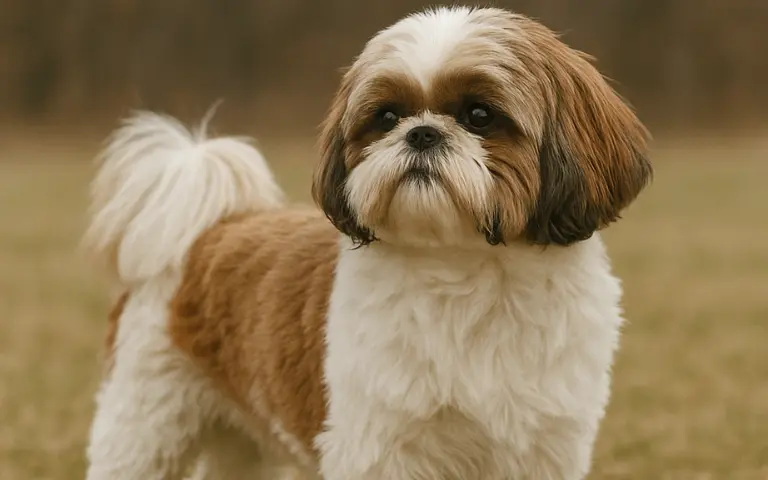
Dating back more than a millennium, the Shih Tzu is a breed of imperial Chinese heritage. Favored by Chinese rulers and their families, it became advanced enough to inhabit imperial palaces. Mandarin translation of the call Shih Tzu is “lion dog.” Though it has a thick, opulent coat, the Shih Tzu sheds very little, and their pores and skin generate less dandruff.
They can be quite allergically pleasant while successfully groomed. Indoor lifestyles are made less complicated through their quiet, loving nature. At their core, Shih Tzus are lapdogs; therefore, they’re ideal buddies for those seeking out a low-energy, hypoallergenic pet.
Havanese
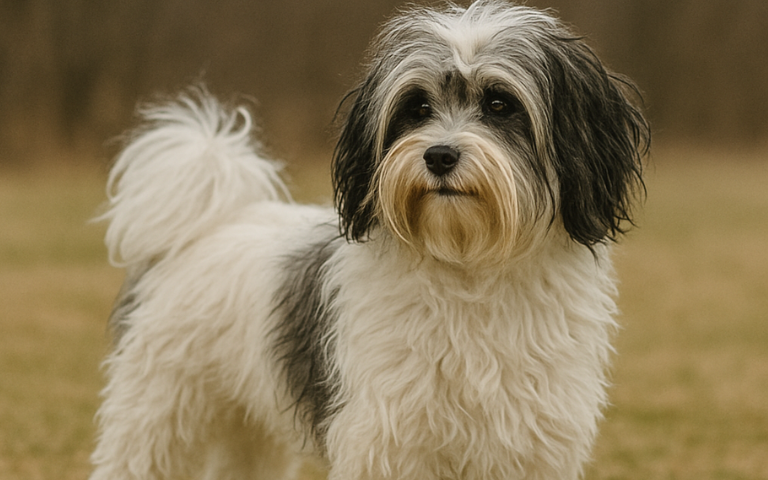
Originally developed from Bichon-like dogs introduced by Spanish colonists, the Havanese has become the beloved national breed of Cuba. Renowned for his or her type mind-set and long, silky coat, they quickly have become favorites amongst Cuban nobles. With a light, smooth coat that does not shed much, they’re an excellent choice for people with moderate canine allergies. Charming, clever, and extraordinarily affectionate, Havanese puppies. They are easy to educate and prefer being the focal point of attention. Their allergy-friendly qualities and cheerful nature make them one of the best family-friendly dog breeds available.
Tips to Reduce Dog Allergies at Home
To stay extra safe around even Hypoallergenic Dogs, try these useful allergy-reducing tricks.
Vacuum Regularly (Use a HEPA Filter)
Dog dander, hair, and dirt can without problems settle into carpets, furniture, and curtains. That’s why it’s essential to hoover your house at least 2–three times a week, especially if you have a dog. Using a vacuum with a HEPA clear out out is exceedingly endorsed due to the fact that it may entice the tiniest allergens and prevent them from recirculating into the air.
Bathe Your Dog Regularly
Bathing your canine helps to clean away allergens like dander, saliva, and dirt from their fur. Depending on your canine’s breed, it’s suitable to wash them as soon as every 2 to four weeks the usage of a gentle, Hypoallergenic canine shampoo. This continues their pores and skin easy and decreases the quantity of allergens spreading in your home. But be cautious now, no longer to over-bathe, as it could dry out their pores and skin.
Keep Dogs Off Your Bed
Letting your canine for your mattress increases the opportunity of allergens infiltrating your blankets, pillows, and sheets, even if they may be hypoallergenic. Letting your dog have its cozy sleep area is healthier for both of you. This allows reduce down on direct publicity to allergens at the same time as you sleep, whilst hypersensitive reactions can be maximum upsetting.
Use an Air Purifier
For allergic reactions, air filters are a beneficial instrument. By shooting pollen, dander, or even dust, an advanced HEPA air cleaner can help purify the air in your house. Particularly in tiny, restrained regions, maintain the air clean and allergen-free with the aid of putting one in not unusual place places, just like the residing room or bedroom.
Wash Your Hands After Playing
It’s smooth to forget, however, after gambling together with your canine, in particular petting, grooming, or cuddling, you need to continually wash your hands. Allergens out of your canine’s fur and pores and skin can transfer on your fingers and which to your face or eyes, irritating. A short hand wash with cleaning soap can pass an extended manner in stopping sudden allergic reaction symptoms.
Are Hypoallergenic Dogs Safe for Kids?
Yes, indeed! Most allergy-friendly dogs are calm, kind, and ideal companions for children. Many of those breeds are famous for his or her loving and active mindset, which makes them ideal pals for families. Thanks to their pleasant mindset and small size, breeds just like the Maltese, Havanese, and Mini Poodle are particularly tremendous with kids. Still, deciding on the right breed in your toddler’s pastime stage and age is crucial. Particularly when you have younger kids, constantly select a canine famend for being patient and tolerant.
Teaching your kids a way to deal with puppies politely, no tail pulling or forceful treatment, is similarly crucial. Establishing accurate early contacts fosters a strong, strong bond that lasts a lifetime between your child and the dog. Furthermore, even Hypoallergenic Dogs may want to bring a few allergens. Maintaining the house clean, common vacuuming, and
making sure your toddler washes their fingers after cuddling the canine will all help decrease hypersensitivity reaction risks. A hypoallergenic canine may be a secure, loving, and exciting addition to your circle of relatives if given suitable care and supervision.
Our Experience With Hypoallergenic Dog Breeds
Breeds like Poodles, Maltese, and Bichon Frise all confirmed amazing overall performance with allergic own circle of relatives members. Keeping your dog well-groomed and your home tidy is essential in this case. A hypoallergenic breed should surely rework your lifestyle if you are having sneezing or itchy eyes around dogs.
📝 Final Thoughts
Having canine hypersensitive reactions would not always suggest you need to abandon your intention of proudly owning a hairy buddy. Finding a loving pal that suits your way of life without triggering hypersensitive reaction signs is pretty feasible among such a lot of hypoallergenic canine breeds. The trick is to select a breed that sheds much less and generates little dander, then preserve a simple domestic environment through common grooming and cleanliness. Whether you want a cheeky Poodle or a cuddly Maltese, the happiness of getting a canine
remains within reach even for hypersensitive reaction sufferers. You can also revel in an existence packed with tail wags and cuddles, free from sneezing, with the precise choice and care.
FAQs About Hypoallergenic Dogs
What Does “Hypoallergenic Dogs” Mean?
Hypoallergenic dogs are breeds that are less likely to trigger allergic reactions in people. Although no dog is 100% allergy-free, these breeds usually shed less hair, produce less dander, and have coats that trap allergens. This makes them a better choice for people with allergies. Examples include the Beagle, Maltese, and Poodle.
What Are Some Large Hypoallergenic Dog Breeds?
If you love big dogs but have allergies, you still have great options. Large hypoallergenic breeds like the Standard Poodle, Portuguese Water Dog, and Giant Schnauzer shed minimally and produce less dander. Some Labradoodles with curly coats are also ideal. These dogs are smart, loyal, and full of energy — perfect for active families.
What Is the Best Food for Hypoallergenic Dogs?
Hypoallergenic dog food is specially made for dogs with food allergies. It avoids common allergens like beef, chicken, dairy, wheat, and soy. Instead, it uses limited ingredients with unique proteins like duck, salmon, or venison. These foods help reduce itching, digestive issues, and skin problems. Talk to your vet if your dog shows symptoms like scratching or ear infections. Brands like Royal Canin Hypoallergenic, Hill’s Prescription Diet, and Natural Balance LID are good choices.
Can I Adopt a Hypoallergenic Dog?
Yes, you can! Many shelters and rescue groups have hypoallergenic breeds such as Poodles, Maltese, and Schnauzers. Try websites like Adopt-a-Pet or Pathfinder, or visit your local shelter. Before adopting, spend some time with the dog to make sure you don’t have allergic reactions.
